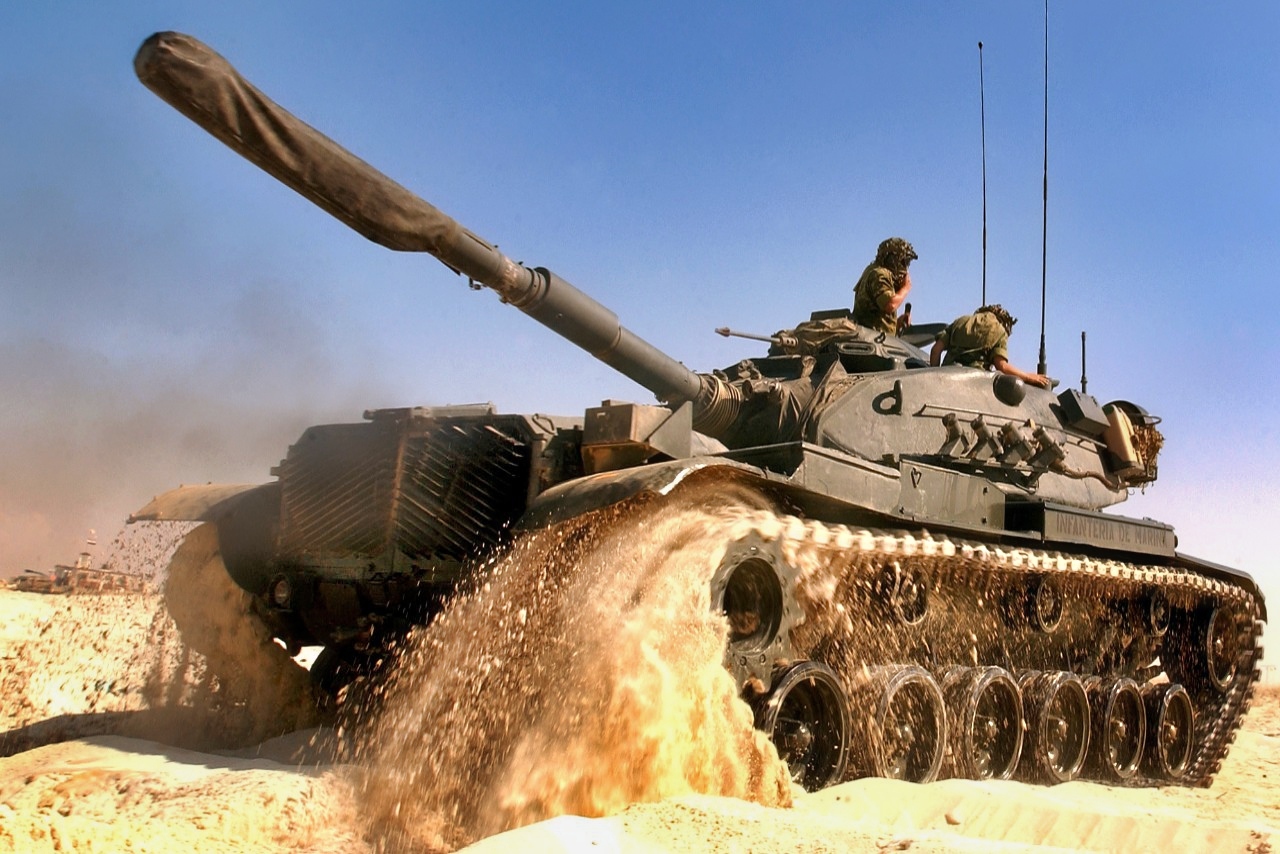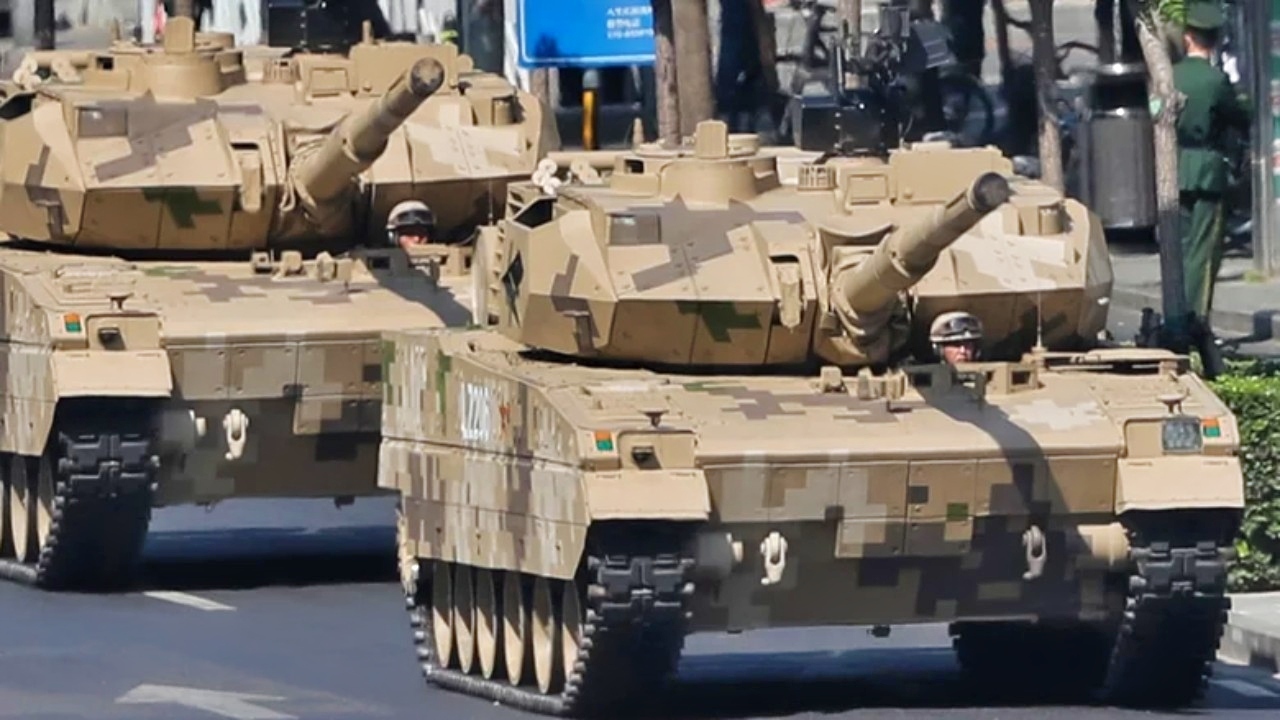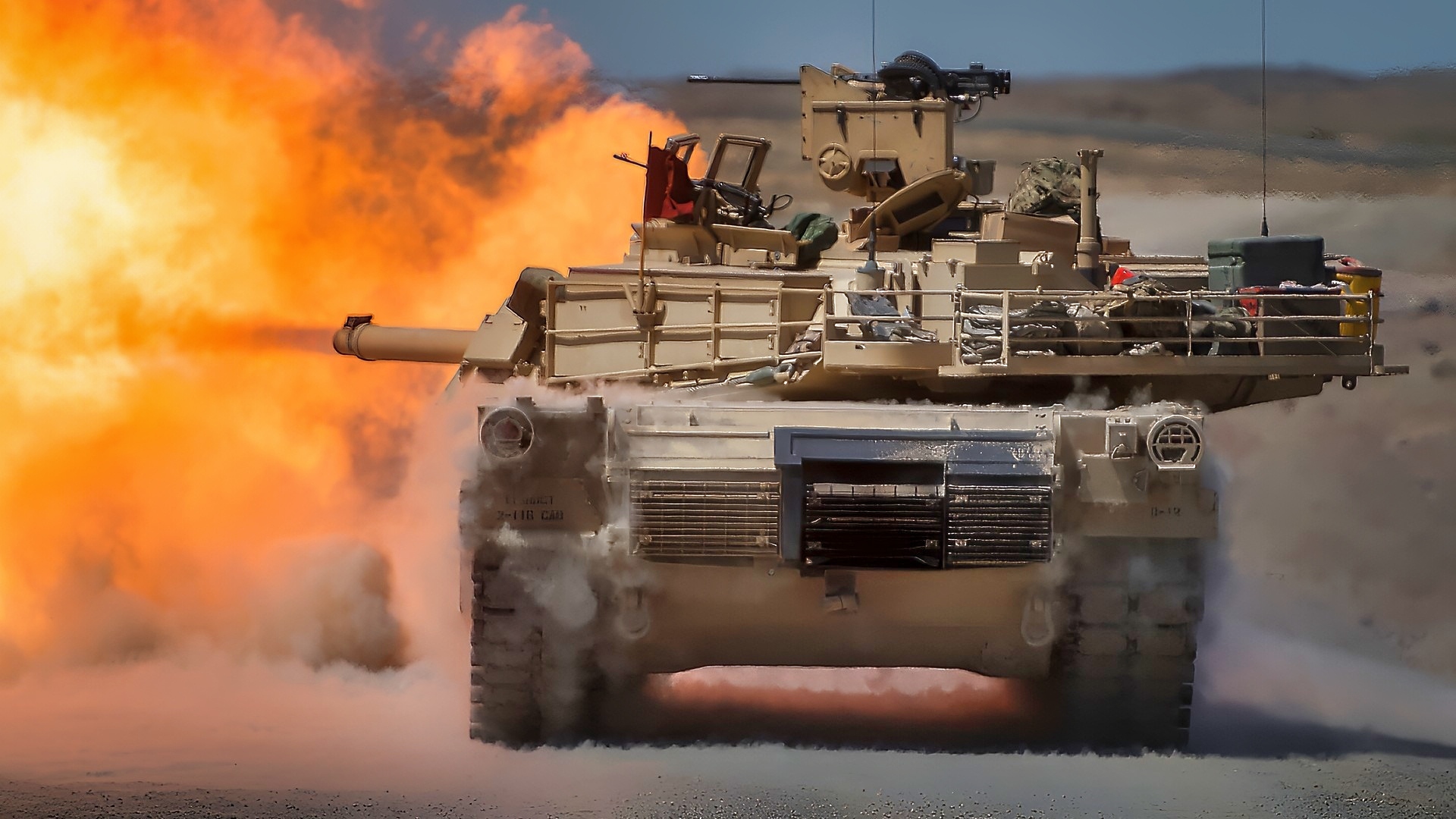Key Points and Summary – Ukraine’s war made tank videos go viral—but not the obituary. Early Russian losses stemmed from bad tactics, mud, mines, and no infantry or air cover, not from armor’s irrelevance.
-T-72 ammo-in-turret design magnified kills; artillery did much of the stopping. Urban fights still demand infantry first, armor in support—an 80-year lesson.

A U.S. Army M1 Abrams, assigned to 4th Battalion, 6th Infantry Regiment, 3rd Armored Brigade Combat Team, 1st Armored Division, fully emerges from the tank firing point to engage the simulated enemy at Novo Selo Training Area, Bulgaria, March 5, 2025. 1st Armored Division, a rotational force supporting V Corps, conducts training with engineers and tank operators in the European Theatre to maintain readiness and instill fundamental Soldier skills that are vital in maintaining lethality. (U.S. Army photo by Spc. Kyle Kimble)
-The next act is adaptation: AbramsX pairs loitering Switchblade drones with AI-enabled sensing (Katalyst NGEA), unmanned turret, 120mm main gun, 30mm coax, and developing 360° anti-drone/APS protection.
-When forces regain combined arms and reliable air support, tanks remain decisive—used differently, networked, and harder to kill for the fights ahead.
Is the Age of The Tank Dead?
The Russian invasion of Ukraine has turned into a bloody stalemate, with each side exacting a heavy toll on the other to gain just a few yards of ground.
The toll on tanks and armored vehicles has been horrendous, leaving neither side wanting to commit its armor in frontal attacks due to the plethora of drones and anti-tank missiles in the air, and the mines sown in nearly every patch of ground.
As the use of drones in the war increased, so did jamming and other anti-drone stopgap measures. Smaller, cheaper, fiber-optic drones have been pressed into service that are much more resistant to jamming, giving some areas of Ukraine the appearance of a spiderweb.
But what has unfolded in Ukraine has opened eyes around the world to the power and threat of drones. Tank warfare is a major concern: Is the tank a modern version of a battleship in World War II? Or can tanks survive and thrive on a modern battlefield against near-peer enemies?
What about the newest tanks under development – the Abrams X, Challenger 3, or T-14? Is developing these armored behemoths throwing good money after bad?
Focusing On Ukraine, Why Have Tanks Failed?
The early stages of Russia’s invasion saw scores of Russian tanks and armored vehicles in convoys smashed, with their turrets blown off. Headlines loudly proclaimed the death of the tank. They were wrong.
Serious analysts could quickly see that Russian overconfidence led to poor tactics, such as deploying large, miles-long columns of armored vehicles on a single road. They were unable to execute normal doctrinal tactics due to a warmer-than-normal winter that left the ground too soft.

M60A3 Tank. Image Credit: Creative Commons.
This left the vehicles prone to massed Ukrainian artillery, anti-tank missiles, and, yes, drones. Was the issue bad or obsolete tanks? Did the episode portend the end of armored warfare? No, it was a demonstration of poor tactics, and of overconfidence begetting criminally stupid decisions.
The T-72 Tank Suffered, No Doubt:
Russia used the T-72B3 main battle tank when it invaded Ukraine. This variant features improved thermal imaging and sights, an upgraded gun, and explosive reactive armor. But even with the major upgrades, they continue to take heavy losses. The T-72s have proved especially vulnerable to angle-down weapons such as the NLAW, Javelins, and attack drones, and the design of the tank had a part to play in that vulnerability.
Russian tank designers placed ammunition storage beneath the turret, which means any hit there will ignite the ammunition and send the turret flying off the hull with a tremendous explosion.
Combined Arms Operations…Yes, We’ve Heard This Before
Military analysts have long emphasized the use of combined arms operations to mitigate armor losses in Ukraine.
Early in the war, Russian tank losses were extremely heavy due to weather, poor planning, worse execution, and a total lack of infantry support. The Russians preach combined arms just like the U.S., but their political leaders were overconfident and overruled military leaders who knew better.
Further, of the nearly 1,000 tanks lost in the early phase of the war, more than 34 percent were abandoned.
Ukraine has said that what stopped the Russian advance wasn’t Javelin anti-tank missiles or drones, but Ukraine’s artillery.
Old Is New Again
One complaint I hear and read all the time is that “Tanks now need infantry in urban areas to protect them from drones and antitank guided munitions!” I have to shake my head and wonder if anyone reads history anymore.
This has been a staple since World War II. My father was the commander of a tank destroyer– M-10s, and later M-36s in Europe.
He recounted to me that especially in late 1944 and early 1945, when entering built-up areas, the infantry would lead. Armor – Shermans, Pershings, and tank destroyer units – would support them by blasting built-up areas as the infantry moved forward. Tank destroyers were especially vulnerable to angle-down fire because of their open-topped turrets. Tanks were not.

Israel Merkava Tank. Image Credit: Creative Commons.
One trick they learned, rather than have the infantry be forced to clear multi-story buildings, is that 90-mm guns could blast the lower level of houses and buildings, causing them to collapse and making it easier to move forward. The use of infantry first thus isn’t new or controversial. It has been practiced for more than 80 years.
Combined arms operations integrate diverse military capabilities, such as ground forces, artillery, air power, and engineers, to achieve a synergistic effect that’s more effective than what individual elements could achieve alone. They create a decisive advantage by enabling coordinated attacks, defensive actions, and maneuver across air, land, and sea domains.
The goal is to achieve a physical, temporal, or psychological advantage over the enemy by making them vulnerable to multiple systems simultaneously. Effectively applying the principles of combined arms requires extensive training, clear communication, and continuous adaptation to the battlefield.
Air Dominance? Not a Chance
The Russian Aerospace Forces never achieved air superiority, let alone air dominance, as they had anticipated.
Had they done so, Russian T-72s would be seen everywhere in Kyiv as victors, rather than the Russians losing so much armor that they are forced to bring ancient T-62s and T-55s out of storage to feed the meat grinder.
When neither side can gain an advantage in the air, the combined-arms process starts off on the wrong foot.
Newton’s Third Law, “For Every Action…
Yes, this is the age of the drone. But how long will that last? Militaries are not just throwing up their hands and conceding that the day of the tank is over. Instead, they are incorporating innovations.

M10 Booker. Image Credit: Creative Commons.
Take the AbramsX for example. The tank utilizes four launchers on its rear that fire Switchblade 300 munitions. These loitering drones are controlled by crew members in the vehicle’s hull.
The Switchblade also functions as a camera, allowing the tank to see what is up ahead.
AI Systems To Protect The Tank
According to the Washington Post, “An artificial system on board could be used to spot dangers in the distance…[potentially] the software could alert soldiers that an enemy tank is a few miles away and has roughly 90 percent confidence it’s a threat. The tank can also communicate with unmanned aerial vehicles to scout dangers ahead.”
The AI software incorporates an IP protocol called Katalyst Next Generation Electronic Architecture, or NGEA, a modular open architecture. It uses AI for object detection and recognition, automatic target prioritization, and navigation help, including path planning and obstacle avoidance.
The war in Ukraine has highlighted the vulnerability of armor to drones and missiles launched straight down onto tanks’ roofs, where the armor thinnest. GDLS is working on a defense system that will use three radars and launchers to give tanks crews 360-degree protection.

Type 15 Tank from China. Image Credit: Creative Commons.
With the three-man crew in the hull, the turret is not manned. The tank features a 120-mm main gun and a 30-mm gun, replacing the .50-caliber machine gun.
Thanks to another strong design element, the gunner and commander can scan the battlefield independently without needing to rotate the turret.
The face of war is changing, and armored forces must adapt to it or face a slow, ignominious demise, as seen in Ukraine. But the tank will live on; it will be used differently as each situation dictates.
About the Author: Steve Balestrieri
Steve Balestrieri is a National Security Columnist. He served as a US Army Special Forces NCO and Warrant Officer. In addition to writing on defense, he covers the NFL for PatsFans.com and is a member of the Pro Football Writers of America (PFWA). His work was regularly featured in many military publications.
More Military
China’s ‘Navy’ J-35 Stealth Fighter is Doing Elephant Walks
The B-21 Raider Has a Surprising Secret Out in the Open
Japan Is Test-Firing Railguns (America Has None)










